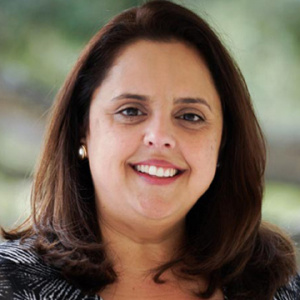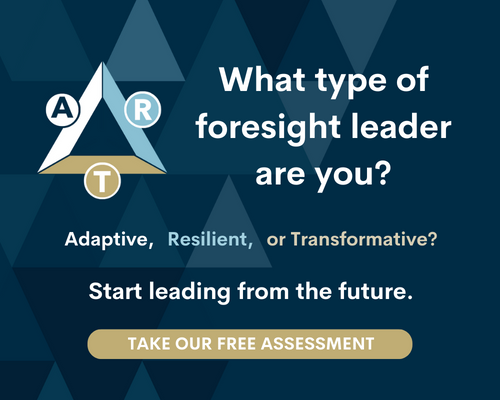Kill the Five-year Plan

The Current State: Good Intentions, Poor Results
Having spent the majority of my career as a finance professional for large, multi-national firms, I know intimately the herculean (and often fruitless) task of strategic and financial planning. By the end of my 13 year tenure within Disney, for example, the various planning processes (annual, five year, capital, etc.) continued year round, overlapping and creating cacophony of competing models, templates and deliverables that, ultimately, had little to do with the future. In fact, the only discernible mention of a true futures forecast came in the form of a footnote on the final page of the five year plan which briefly highlighted potential “risks and opportunities” over the plan horizon. To add insult to injury, none of the dozens of five year plan reviews I participated in ever even acknowledged those risks and opportunities – I guess that’s what you get for being just a footnote.
The Sad Truth
My corporate planning experience is not unique but rather indicative of scenes being repeated across industries and countries each and every day. Most current corporate planning functions are focused on creating this seemingly endless number of annual, five and even ten year plans, all using the same, antiquated, industrial-age mindsets and principals. Leveraging linear extrapolations of the present and attempting (in vane) to simplify the growing complexity of our interconnected world, these processes are largely focused on managing risk and meeting short term targets and they fail to look outside the organization for either threats or opportunities. Rather than seeking to provide a meaningful map to chart the future, these plans exist to placate senior leadership and investor growth expectations by setting unachievable targets and then filling in the resulting gap between today and tomorrow with “TBD” placeholders for cost cutting.
The World Has Changed…Why Haven’t Our Models?
While these quantitative-based, Excel-generated models may have served us well in a previous era where social technology did not exist and global financial markets were largely independent, our existing processes have quickly become futile exercises in long-term planning amidst our interconnected, volatile, uncertain, complex and ambiguous environment. When have you ever seen an annual operating plan that accurately forecasted the 12-month period it was attempting to predict? If you have, I suggest immediately playing the Powerball Lottery and using your incredible crystal ball skills for personal benefit!
It the midst of this unprecedented environment of accelerating change, it’s really not surprising that organizations continue to cling to these outdated models like a worn and familiar “blankey”. We are scared and there’s something strangely comforting about seeing a print out of a forecasted income statement for the year 2025 where all the numbers add up and tie out. I mean, if our spreadsheet says it is so, then certainly we can make is so, right? Not so fast….
A New Strategic Planning Process: Create the Future
So it is clear that our current models, processes and mindsets are no match for the emerging business landscape in which disruptions are more likely to come from outside your industry than from an existing competitors and where it seems that as soon as we’ve chosen a path, it’s made obsolete by converging technological, social, and economic forces. In fact, some organizations have become so frustrated with the inability to accurately forecast more than three months out, that they have thrown their hands up and completely abandoned long-term planning all together, content to just battle short term fires as they erupt. While, this “head in the sand” method is probably no more ineffective than the models most are using today, there is a better way.
In the midst of all this chaos, many firms have found a “new” way to successfully navigate their organization’s future. These innovative firms have (re)discovered a 40-year old discipline called strategic foresight which is enabling them to not only avoid the plethora of potholes this emerging environment can produce, but also take advantage of the multitude of hidden opportunities for potential growth that this new, complex landscape can serve up. By leveraging both qualitative and quantitative data and continually scanning the macro environment (where societal, technological, environmental, economic, and political trends emerge and converge), strategic foresight provides the tools to transform our existing corporate planning processes (and mindsets) to become adaptive and resilient in these uncertain times. Unlike the planning processes most firms use, futures thinking does not attempt to predict the future because, let’s face it, that’s impossible. Instead, these proven models (when effectively infused into your corporate culture) can do something much more powerful…they can help your organization CREATE whatever future it desires. Strategic foresight allows us to make sense of the emerging landscape, develop aspirational futures and create detailed road maps to achieve them.
I know what you are thinking…
If strategic foresight is really this miracle elixir for our broken corporate strategic planning processes, why isn’t everyone jumping on the futures bandwagon? Well, while many firms (large and small) are beginning to embrace futures thinking as the way to effectively navigate and capitalize on the chaotic business landscape, it’s not an easy transition. To successfully leverage strategic foresight, organizations must completely transform not only their models and processes, but more importantly their culture. You see, while strategic foresight is a discipline, we believe it is best served as a philosophy – as a new mindset for your entire organization. This type of shift does not happen overnight, but with the right foundation and strong leadership support, we have helped many firms begin to own their futures once again. Together we can promote the future from its current role as an ignored footnote to a beacon lit in perpetuity that can provide your organization with continual guidance on achieving even its most inspiring long-term visions.
Listen to a discussion on this topic!
Our episode of The Wicked Opportunities® Podcast, “The Future is not a footnote” is a fun conversation about how our quantitative metrics of success are impossible to extrapolate in a complex future.

Yvette Montero Salvatico
Co-Founder
Managing Director
Holding a bachelor’s degree in Finance and an MBA from the University of Florida, Yvette has over 15 years of corporate experience with large, multi-national firms such as Kimberly-Clark and The Walt Disney Company. Before co-founding TFSX, she led the effort to establish the Future Workforce Insights division at the Walt Disney Company, identifying future workforce trends and leveraging foresight models and techniques to assess potential threats and impacts, emerging ideas, and exciting opportunities for the organization.
Read More
